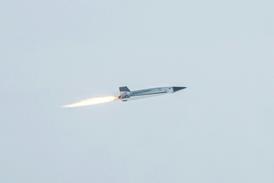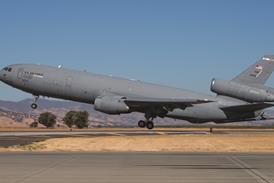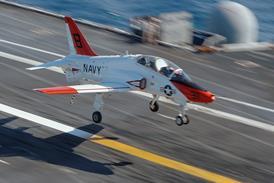Airlines combed through their maintenance costs to eliminate as much unnecessary expense as possible during the last downturn, so you may be forgiven for thinking there are no savings left to be found this time around. As airlines are forced to become increasingly frugal by high oil prices, falling demand and the threat of global recession, are there any options left to enable them to further whittle down their maintenance costs?
Chris Spafford, a partner specialising in maintenance, repair and overhaul at consultancy Oliver Wyman, outlines the steps taken by airlines to shave their maintenance costs in the wake of the last major downturn, but says there are "more sophisticated" cost-saving measures emerging today. "If we look back eight years to the last major economic downturn, a major wave of restructuring took place in the industry," he says.
 |
|---|
"The maintenance, repair and overhaul market is a bit overly fragmented for its total size"Chris SpaffordPartner, Oliver Wyman |
This restructuring primarily took the form of significantly increasing the amount of outsourced maintenance, as well as putting in place "a series of input cost reductions", where labour contracts were re-negotiated and internal headcounts reduced. There also followed a "semi-trend of migrating outsourced work to lower cost locations". While these measures are still being adopted today, Spafford says that "we are starting to see things that are more sophisticated in nature". Among the latest trends are maintenance programme optimisation and the adoption of lean maintenance techniques.
The former involves putting off non-essential maintenance until a later date, allowing an airline to "optimise when maintenance is performed so that it can fly safely while eliminating superfluous maintenance", says Spafford. "There has been a fundamental movement from a reduction in input costs to a reduction in the amount of work performed. This is a significant lever that carriers have begun to pull in the last year and a half, and the effects have been profound."
STANDARD BEHAVIOUR
David Stewart, co-founder of consultancy Aerostrategy, agrees, pointing out that "any discretionary work will be deferred" and "any maintenance that can be deferred legally will be deferred". However, he points out that there are no revolutionary cost-cutting measures to be found in the field of maintenance. "What the airlines will do will be relatively standard behaviour in a downturn," he says. "You don't do anything dramatic in maintenance."
While airlines such as Northwest and United in the US outsourced the majority of their maintenance in the last downturn, Stewart does not believe any carriers have reached the stage of following a similar strategy this time around - at least, not yet. "If the recession bites really hard like in 2001/02, airlines will look at restructuring their maintenance models," he says. "In the 2001/02 downturn, Northwest and United Airlines basically got rid of it all - they outsourced all of their maintenance. Some will look at that as an opportunity, but we're not at that point yet."
 |
|---|
© Rex Features |
One airline that is currently undergoing a significant cost-cutting programme and which recently made vast changes to its maintenance contracts in order to save money is Ireland's Aer Lingus. The carrier had a 10-year contract with SR Technics in Dublin covering "all our maintenance - line maintenance, heavy, components, wheels and brakes, the lot", says Aer Lingus director of corporate strategy Enda Corneille. This contract came to an end in October and the carrier decided to abandon its previous strategy of handing all of its maintenance to one provider under a long-term deal. Instead it went to the international marketplace and secured new contracts with several new service providers through a tender process.
"Rather than one provider, we now have Sabena doing our heavy maintenance, Goodrich doing wheels and brakes and Lufthansa doing the components, while SR Technics kept the line maintenance," says Corneille. "These are value-for-money contracts with opportunities to review the terms. They all have break-clauses so we're not stuck again for 10 years - they allow us to go back and review the terms." Aer Lingus' new maintenance contracts are for "varying lengths up to 10 years". By splitting its maintenance contracts up in this way and seeking the most competitive deals available, Aer Lingus expects to achieve savings "in excess of €20 million [$27 million] a year".
Corneille points out that as the carrier began to examine its 10-year deal with SR Technics, it found that "in some cases the work was not being done by SRT, it was handled by third parties and the supplier was putting a mark-up on it". While he admits that the contract was convenient, Corneille is keen to outline the benefits of shopping around.
"There is a convenience factor - SR Technics is located 50 yards away from our head office - but it's a buyer's market. There are a lot of suppliers out there and it's good not to have all your eggs in one basket," he explains. "We went from room to room, from supplier to supplier, to drive down savings, and we would have gone across the world for the tender."
DIFFERING VIEWS
Aer Lingus' experience unearthed plenty of competition between maintenance, repair and overhaul providers which it says allowed it to find the most cost-effective deals possible. But not everybody agrees that enough competition exists among suppliers. For instance, Geir Steiro, vice-president of technical operations at Scandinavia's SAS, says competition is lacking on certain aircraft types.
"As an airline, we would like to see more competition on some aircraft types because this reflects on what we do in-house and what we do externally," he explains. "For example, for Boeing 737 and Airbus A320 aircraft you can find providers, but it's not that easy on the MD fleet."
But this viewpoint is contradicted again by Oliver Wyman's Spafford, who says: "The MRO market is a little bit overly fragmented for its total size. It's extremely competitive so I don't think there's a lack of choice."
Corneille recommends sourcing maintenance contracts through a tender to other airlines, "as long as it's carried out in the right way". However, Spafford makes the point that not many carriers are as dependent on one maintenance provider as Aer Lingus was before it changed its policy. "Very few airlines use one supplier for all their maintenance. At a minimum they will separate the engine maintenance. And frankly there are very few providers that can provide nose-to-tail component support for any particular aircraft," he says, adding that "there is no right answer, but there has to be some balance of long-term contracts, short-term contracts that allow you to move from supplier to supplier, and contracts with complete flexibility".
Steiro at SAS agrees that flexibility is important, but cautions against entering into too many short-term deals. "With the fleet size we have, we can't just shop around in the marketplace for short-term deals - we need longer-term deals. We try to build in flexibility for if things change, but it's important to have a supplier that we can rely on," he explains. Most of SAS' maintenance contracts are three-year deals.
Iberia is another carrier that prefers to enter long-term agreements with several suppliers and regularly renegotiate the terms. "We think it is better to have a few maintenance providers on a longer-term contract," says Iberia maintenance operations director Jose Luis Ruiz de Castañeda.
"Among other things, Iberia renegotiates its supplier contracts and reinforces its commitment to matching tasks with the most appropriate labour force. There is always room to reduce costs as there are always new products and procedures to do it." Iberia performs 75% of its maintenance in-house and outsources the rest, a ratio that is "not likely to change", according to Casteñeda.
SAS performs most of its line maintenance in-house but tends to outsource some of its widebody work "because we have ground stops around the world and we try to utilise that", says Steiro. The airline group offers some third party maintenance services to other airlines, but "this is not part of our main strategy". Other airlines, however, see offering third party maintenance as being an important way of bringing in extra revenue and are growing their activities in this area.
One such carrier is Brazil's TAM, which will decide in early December whether to spin off its maintenance division, although it plans to expand the business regardless of which direction this decision takes. Until now, TAM's maintenance division has focused on servicing the needs of its own fleet, but the carrier sees an opportunity in expanding the business to take advantage of strong growth in its region's air transport sector.
"We were allowed to sell the idle space, but because we were optimised for TAM's fleet our idle space was not huge," says the Brazilian carrier's vice-president of maintenance Ruy Amparo. "Only 3-4% is third party work. That's why we see it as a strong opportunity. The fleet in Brazil is a major part of the fleet in Latin America. We have a good opportunity to sell services in this region."
EXPANSION PLANS
TAM's maintenance arm provides services on the Airbus A320-family aircraft and A330s it already operates, and it hopes that by next summer the facility will also be in a position to carry out work on Boeing 767s. In addition, it hopes to be able to carry out heavy checks on Boeing 777s, although this would require an extension to the runway at its Sao Carlos facility near Sao Paulo. "We have talked to the local authorities. But the first C-check of the 777 is around two years from now, so we have some time," says Amparo.
 |
|---|
"We went from room to room, from supplier to supplier, to drive down savings"Enda CorneilleDirector corporate affairs, Aer Lingus |
He sees growing TAM's maintenance offering as a way of reducing its costs for customers, and is upbeat about this side of the business, despite the difficult market conditions facing the airline industry. "We have a big facility - it is an opportunity to dilute our costs," he says, adding: "We are not suffering that much yet. On the MRO side, even in the bad times, you have some opportunities. Also Airbus, Boeing and Embraer sold a lot of aircraft in the last few years and they are starting to require maintenance now."
Iberia also places a strong emphasis on expanding its third party maintenance business, which Castañeda sees as "a good way to bring in extra revenue". He adds: "We are doing several things to develop it. Among them, we are focusing more and more on high technology maintenance. We are also creating joint ventures with other companies in different areas like private jets."
Spafford believes that it "makes sense" for airlines to offer third party maintenance services, but he cautions that an "arm's length relationship" must be created between the airline and the maintenance division for it to work. "The real importance is in the structure: whether to spin it off and hold an equity stake or whether to have a separate division with its own profit and loss account," he says. "Running a maintenance division is extremely different from running an airline. I don't uniformly say it's a good idea and I don't uniformly say it's a bad idea - there is an opportunity there for carriers to exploit."
Aerostrategy's Stewart points out that "some airlines might say 'our maintenance activity is down, so we can fill our hangars with extra checks'", but he is not an advocate of airlines entering the third party maintenance market. "The market is pretty damn competitive and to make a business out of it is a very difficult thing. I wouldn't advise them to do it," he says.
When it comes to outsourcing maintenance, it seems that the cost benefits of sending work to countries where labour is cheaper are being somewhat eroded by high fuel prices. "This is a balancing act with the high fuel prices because you've got to ferry the aircraft further, which can outweigh the benefit," says Stewart.
The fixed price of an airframe check accounts for about 60-70% of the total cost, according to Spafford, and "as the cost of ferrying aircraft increases it puts downward pressure on the remaining 30-40% of the cost". However, he adds that it can still be beneficial to send certain types of maintenance to lower cost locations: "As a general rule, it still makes sense to fly widebody aircraft to locations with significant differences in labour costs for the longer checks. It still makes sense, just a little bit less sense.
"Typically, airlines will fly aircraft overseas with a full load and then it's just a short hop to have the maintenance carried out, a short hop back and then a full flight home."
For more on carriers that have opted to keep their maintenance in-house, go to: flightglobal.com/inhouse
Source: Airline Business


























